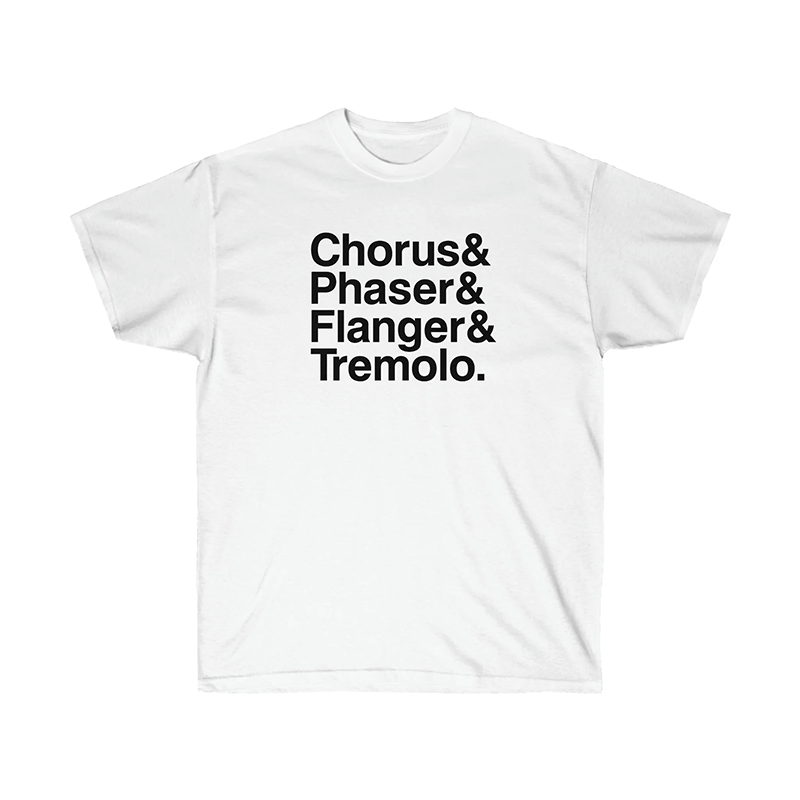 People at shows are always asking me, “Dude, how do you get that tone?!” My reply, which is pretty well-rehearsed by now, is, “I have a bass preamp pedal called a Rusty Box. It’s made by a company in New York City called Tronographic.”
People at shows are always asking me, “Dude, how do you get that tone?!” My reply, which is pretty well-rehearsed by now, is, “I have a bass preamp pedal called a Rusty Box. It’s made by a company in New York City called Tronographic.”
The Rusty Box is housed in a sturdy, attractive, white and orange enclosure with controls for Level, High, Low, Mid, and Gain; a mini-toggle switch to select between Hi and Lo gain inputs, footswitches for on/off bypass and boost, a 1/4” Main Output for use as a stompbox, and a 1/4” balanced TRS Line Output, to interface directly with the recording device of your choice, or to drive a speaker, via a separate power amp and cabinet.
The preamp and EQ circuitry are based on the Traynor TS-50B, a semi-obscure solid-state design, known primarily as Bob Weston of Shellac‘s amp of choice. At fifty watts, however, the TS-50B is underpowered for live usage, (Weston feeds the Traynor’s preamp output to a more robust power amp for shows) but it’s percussive, bark-y breakup can’t be emulated by any other amp. Until now.
When engaged, the Rusty Box introduces complex overtones that immediately set it apart from other bass preamp pedals, and its clear low-end response and growly lower-mids sit perfectly between the guitar and the bass drum in a loud rock context. The EQ is flexible enough to be used for bass or guitar, and the combination of the Hi/Low input with the Gain control goes from crystalline piano bass sounds, to a solid thump, to scraping, abrasive, blown-out dirt, all from a twist of a knob and a flick of a switch. It’s not a sound for everybody, and you’ll know if it’s right for you as soon as you hit your first note. Also, it has an immediate transient response and wide dynamic range, making it very satisfying to play, and feels different from SVTs, or even other solid-state amps.
For live shows, I use the Rusty Box’s 1/4” Line Out as a DI to send a clean direct signal to Front-of-House, which gets blended with a mic’d amp signal that contains my effects and other OD/Fuzz pedals, and I receive nothing but compliments from sound guys and audience members alike. And, I feel confident knowing that if the preamp in my amplifier goes down, I can plug the Rusty Box directly into the power amp input/effects return of my head, and the show will go on.
I have a few minor gripes, however: 1.) I’d prefer an XLR Line Out instead of 1/4”, to eliminate the need for a direct box going to FOH. 2.) The option for a 10 or 15 dB pad on the Line Out would enhance flexibility and further eliminate the need for a separate DI box or other pad. 3.) The Rusty Box requires a wall wart power supply, which is inconvenient on stages where functional outlets are at a premium.
But, considering just how many signal routing and tonal options are crammed into the enclosure, these gripes are easily forgiven, because this thing sounds awesome. It doesn’t matter if you use it as a DI, as an overdrive, or as a preamp — be prepared to answer a lot of questions.
Submitted by Aaron Rogers (website)
GET EXCLUSIVE UPDATES, CONTEST INFO, SEE OUR LATEST DEMO VIDEOS AND MORE:

















March 4, 2014
I love this pedal. It is essential to my bass tone, especially for my work with Nolifur. The wall wart is 40VDC.
April 2, 2014
Is it possible to use the Rusty Box as a live DI , without having to bring a direct box?
April 6, 2014
Yeah, you can use the Line Out without a DI, but it’s a 1/4″ TRS and most stage boxes have XLR inputs. I keep a DI on my pedalboard to convert to XLR and use as a 15dB pad.
April 6, 2014
Thanks! Ithink I have around a trs to xlr cable that will be perfect fir this.